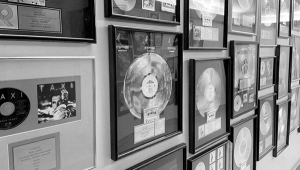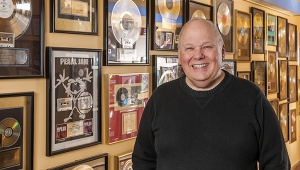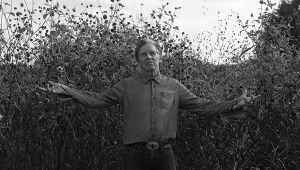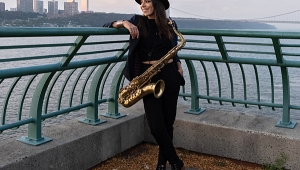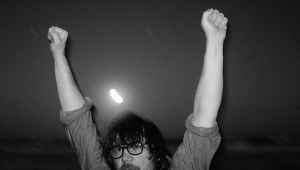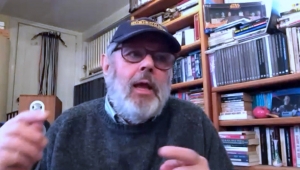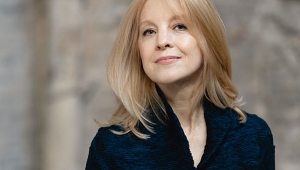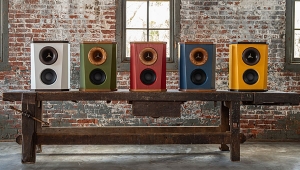| Columns Retired Columns & Blogs |
A Glorious Time: AR's Edgar Villchur and Roy Allison Allison Part 1
Roy Allison: Bending Boundary Effects
Before other people paid attention to the phenomenon, Roy Allison noticed that loudspeaker measurements taken in conventional home living rooms typically revealed a dip in power response in the 100–300Hz range. That was in the late 1960s, when Allison was VP for engineering and manufacturing at Acoustic Research. In 1972, after designing or supervising the design of nine models at AR, he left to begin an investigation of real-room speaker behavior. Next he teamed up with former AR president Abe Hoffman and two other colleagues from that company, Sumner Bennett and Frank Callahan, who had worked in sales and quality control, respectively. The quartet founded Allison Acoustics to build loudspeakers expressly designed to perform optimally where speakers were generally placed: in the home. The first of them, the Allison Model One, appeared exactly 30 years ago, at the end of 1974. Though the firm curtailed operations about 10 years ago, versions of three original Allison designs are now available from a reincarnated Allison Acoustics, which was later re-formed under new ownership.
 David Lander: The US Navy provided your first formal training in electronics. You enlisted at age 17, during World War II.
David Lander: The US Navy provided your first formal training in electronics. You enlisted at age 17, during World War II.
Roy Allison: Yes. They were recruiting electronics technician trainees and giving something called the Eddy test—there was a Captain Eddy in the Navy—to weed out the people who might not be suitable. One of my friends from high school suggested we both go take it because we were both technically inclined. Ironically, he failed and I passed, so I spent just about a year in very intense training in electronics, with emphasis on radar maintenance. Then they sent me to Hawaii as an instructor. After a little more than two years of active duty, I re-upped in the reserves for six years, and they sent me home. I refused a significant advancement in rank, which I would have gotten if I were willing to ship out for the first atom-bomb tests in the Pacific.
Lander: Enlisting in the reserves led to your being called up again during the Korean conflict. What was your assignment then?
Allison: I was still an instructor, but in Rhode Island, on a submarine that never left the area. That lasted eight months, then my enlistment was up. I was offered officer training but refused.
Lander: After your first period of active duty, you studied engineering at the University of Connecticut. When did you get your degree?
Allison: I never got a degree. I got married—in May 1948, two days after my 21st birthday—and my wife, Nancy, gave birth to our son about 13 months later. I left UConn a year short of a BSEE degree to support them, but I never stopped studying. I soon qualified for membership in the IEEE and then the Audio Engineering Society. The AES eventually granted me a fellowship for original contributions in audio.
Lander: Your first job after that was with a magazine, Radio Communications, a trade publication that covered mobile and point-to-point radio. How did that come about?
Allison: On a break from school, I brought my car into Great Barrington [in western Massachusetts], where we were living with Nancy's folks, to have the oil changed. I wandered into a drug store on Main Street and saw these two fellows sitting at the counter having coffee. It was Milton Sleeper and Charles Fowler, and I overheard them talking about needing a draftsman to draw circuit diagrams. I had taken drafting, so I offered my services. That was in 1949. Radio Communications barely eked out a living for them. Once in a while, we would run an audio article, and that's when the magazine would make money.
Lander: So Sleeper and Fowler, who at the time were co-owners of Radio Communications, started a new magazine called High Fidelity. And you, having edged into editing and writing, became one of its—and the hi-fi industry's—first reviewers (footnote 1). Tell us about that.
Allison: Radio Communications ceased publication, and I joined High Fidelity. Fowler had done subjective testing for the magazine, but I wasn't satisfied with that. We started building and reviewing kits, which were big then, and measuring them. I gradually built up test equipment for making some basic measurements. We didn't really test speakers because they were unknown territory at the time.
Lander: What equipment did you own back then?
Allison: The woofers of choice then were Bozaks. I had four in this huge enclosure stuffed with fiberglass. It was 10' long and nearly spanned my living room. It had to be big because these were not acoustic-suspension woofers; put four Bozaks in a small enclosure and you almost had tweeters. On each end of this box was a Janszen four-panel electrostatic tweeter.
Lander: And the associated equipment?
Allison: At that time it would have been an UltraLinear amplifier from Dyna; UltraLinear was a circuit design. I think the preamp was a Heathkit. And a Minter turntable—string drive. The string was slightly elastic. Wow and flutter were actually very good because the turntable weighed about 25 lbs. I was probably using a Fairchild arm and a Fairchild cartridge.
Lander: In 1959, you moved to the manufacturing sector as assistant to the president of Acoustic Research, Edgar Villchur, and for a time supervised customer service. Tell us about that assignment.
Allison: We had an extremely liberal policy. Even after the warranty period, it was almost impossible to pay for a repair unless there was blatant abuse, and even then we very often fixed the speaker at no charge. Some customers actually sent gifts—a crate of oranges, for example, from people down here [in Florida, where Allison and his wife now live]. We got that more than once. Customers then were mostly professionals—doctors, lawyers—anywhere from age 30 on up. College kids were brought into the fold with the AR-4 in the early '60s, and with the less expensive speakers that followed.
Lander: In 1967, when building conglomerates was the rage, Teledyne added AR to its portfolio of companies. Ed Villchur left at that point, but you got a five-year contract and, along with other senior managers, stayed on.
Allison: To Eddie's credit, he insisted on very generous contracts for all of us.
Lander: You've said he would spend about three days each week in Cambridge, Massachusetts, where the company was located, but his home was in Woodstock, New York, a haven for artists. Does that hint at his management style?
Allison: Almost every day that he was in Cambridge, after the workday was over, we went into Eddie's office and had a conference, which consisted mainly of eating macadamia nuts and drinking Johnnie Walker scotch.
Lander: Red or Black label? [laughter]
Allison: Black. There was a liquor locker with all kinds of alcoholic beverages available for the senior executives, including fine wines like Chteau Lafite. We all had company cars—Chevrolets. We didn't even have to buy gasoline; we had a caretaker who checked the cars and filled them with gas.
Lander: A manager could justify all that by saying it kept you at work longer.
Allison: Actually, some useful discussions occurred over the little jiggers of Johnnie Walker Black.
Lander: I'm sure the corporate overseers from Teledyne employed different management techniques. How did they behave?
Allison: We had a relatively uneventful five years under Teledyne, but they bedeviled Abe Hoffman, who had been financial vice president and became president after Eddie left. They insisted on very detailed financial reports, which of course we provided. They insisted on profit plans, which Abe said was like telling fortunes. We did electronics—first an amplifier and then a receiver—and several more speaker models. All the speakers, with the exception of the AR-5, were phenomenally successful.
- Log in or register to post comments

